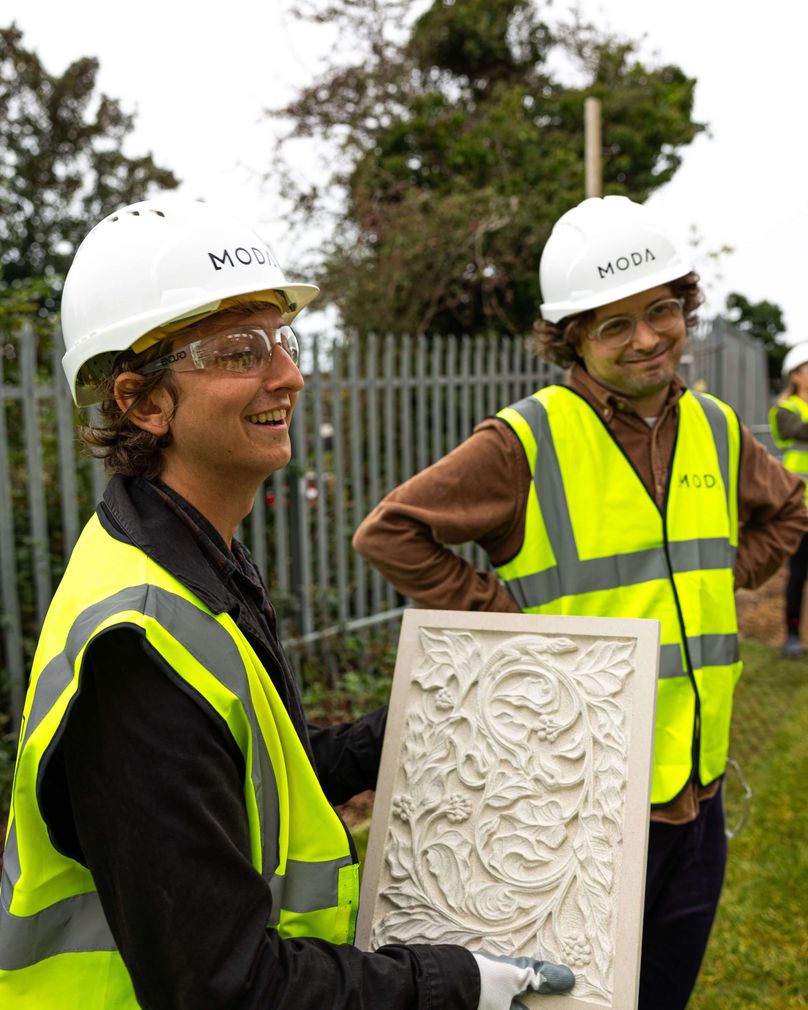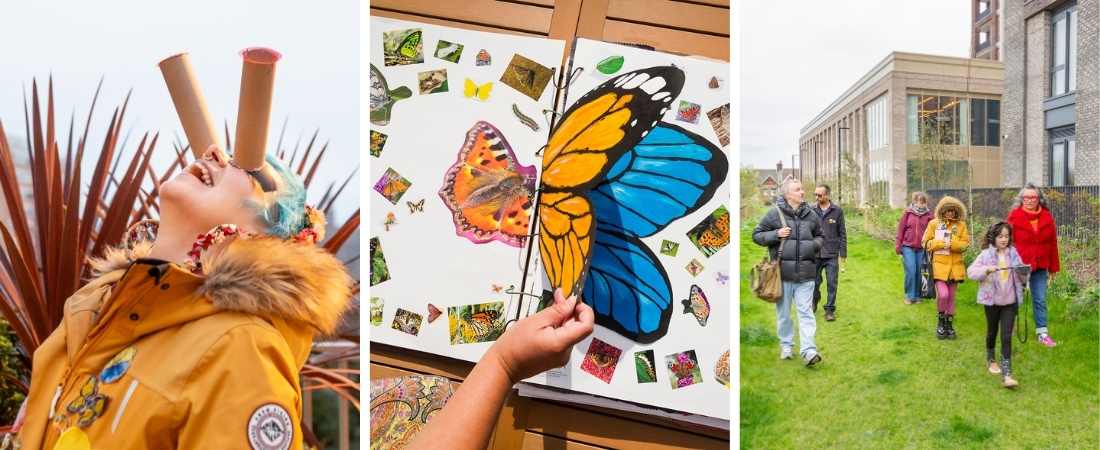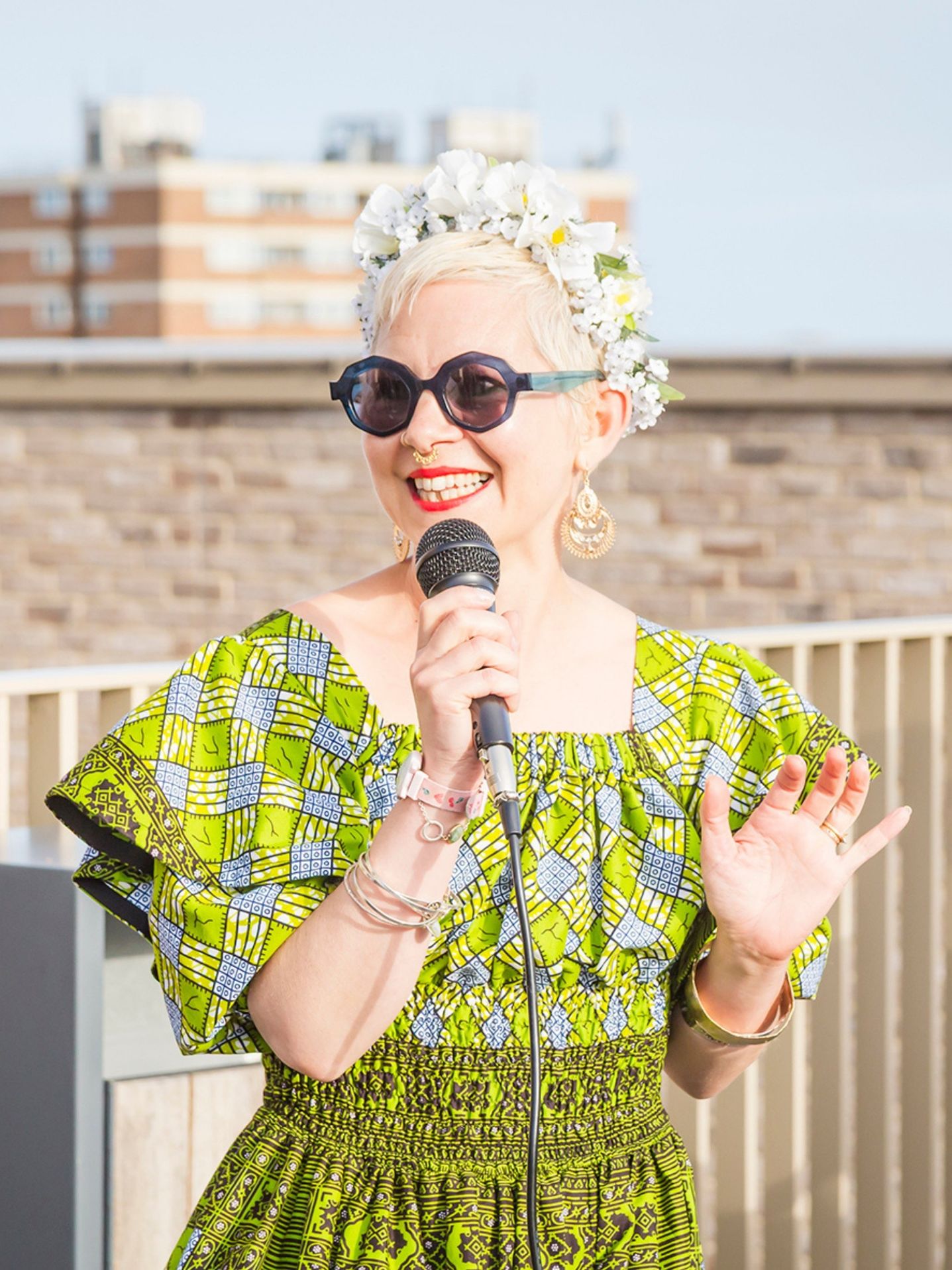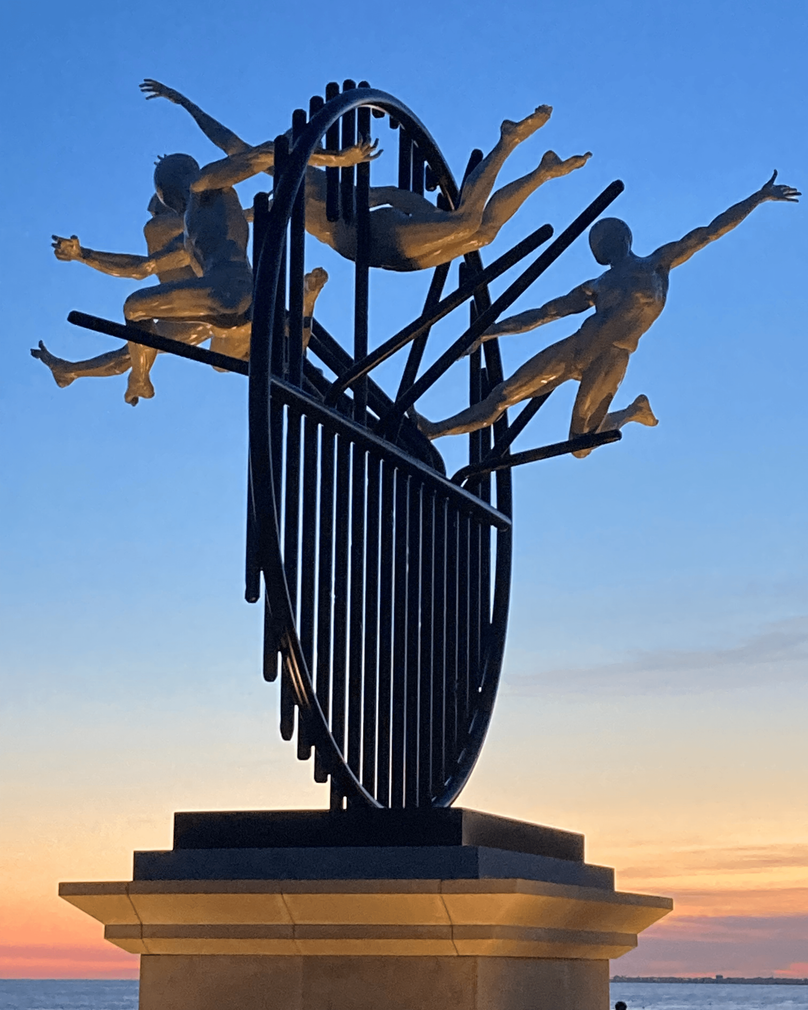
The public art strategy has included three 52m murals painted by local artists on an external boundary wall, three pieces of bespoke public art by UK and international artists (selected by the local community) throughout the Hove Central site, and sponsorship of the stunning Flight of the Langoustine sculpture on the Hove seafront.
One of the most exciting projects to come out of the art strategy has been a year-long artist residency from Kerry Lemon – BTR's first ever artist-in-residence and the UK’s only B Corp certified artist. Over the last year, Kerry has been working with Moda residents and the local community on the Wild Neighbours project. We caught up with Kerry about the programme.
Tell us a bit about Wild Neighbours. What inspired the project and how did it come to life at Hove Central?
Kerry Lemon: I was commissioned as Artist in Residence at Moda, Hove Central – a nine-month opportunity to create work on site with a focus on participation rather than a final sculpture. This was an incredible opportunity; I have 233 sculptures installed across the UK, but this was my first commission based on process, not product, and it offered the chance for extended creative activity with the same group of people over a longer timeline.
I am the UK’s only B Corporation Artist, committed to people and planet, and I work closely with the Nature Connectedness Research Group at Derby University. I know that art can be a wonderful vehicle to connect humans to the natural world, so I wanted to design a project that explored residents' relationships to all their Wild Neighbours: the plants, animals, soil, air, wind, and rain.
You collaborated closely with our Hove Central residents. What was that like? Any moments that really stood out?
It was such a pleasure to get to know so many wonderful people over the course of this project and have so many highlights. I especially enjoyed the session where we explored how other creatures see Moda Central, creating glasses to simulate their vision. It was so funny to see our whacky creations and so fascinating to inhabit the experience of being at Moda for all those “more than human” species we share our world with.
You worked with a mentee on this project. Why is that important to you, and what did they bring to the experience?
I work hard to leave a social legacy on all my projects and voluntarily mentor an emerging artist (self-identifying as female/neutral) local to every public art commission I undertake. This helps leave a skills legacy in the area by supporting women to develop the confidence required to create monumental public realm sculpture.
I’ve now worked with a huge number of womxn all over the country. I learn as much from them as they (hopefully!) do from me, and I’m proud to be in a position to help others follow their dream of becoming an artist.

As an artist, what does success look like at the end of a residency like this? Did Wild Neighbours meet those expectations, or maybe even surprise you?
For me, this project was always about sparking joy and delight in learning about all the “more than human” species who live at Moda, Hove Central. Human dislocation from the land and its diversity has created our current threefold crisis of mental ill-health, global warming, and biodiversity loss.
I’m delighted to have gathered such a wonderful team of scientists and artists to develop a stronger empathy between humans and our planet. This exceeded my expectations, and I’m most excited about the robust evaluation framework that’s been developed to measure the effectiveness of these creative nature interventions. It will be open source to encourage others to invest in these kinds of activities.
You’re the first ever artist-in-residence in a UK BTR community. What do you think this role brings to the neighbourhood’s communities?
As the first artist working in this way in a UK BTR context, I hope I’ve shown that art can offer more than decoration—it can foster connection, curiosity, and care. It can create spaces where people pause, participate, and pay attention—not just to each other, but to the ecosystems around them.
This role has opened doors for collective noticing: of birdsong, of soil, of seasonality. In a world where loneliness and environmental disconnection are endemic, I believe artists can help communities feel more rooted—both in place and in one another.
Image credits: Emma Brown


